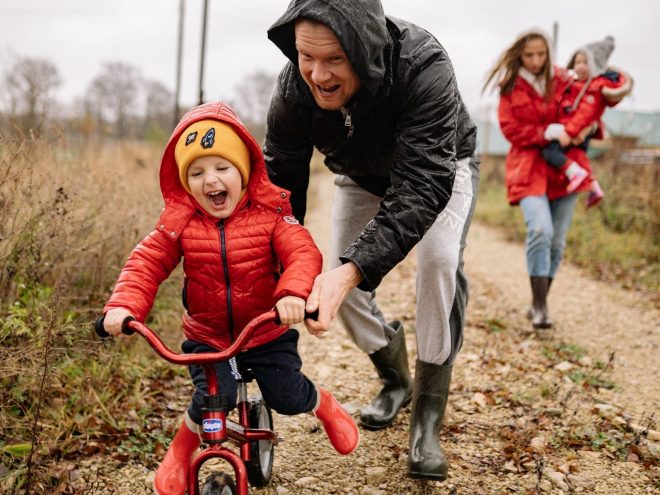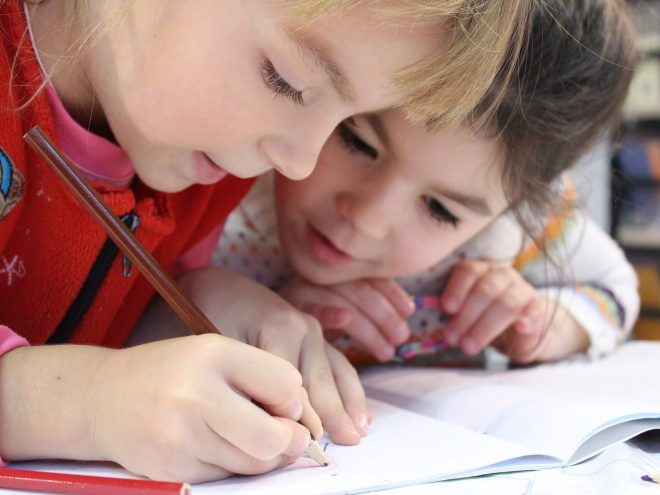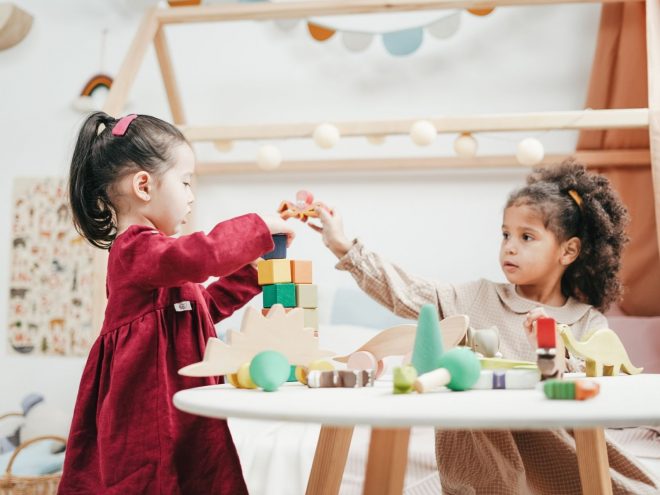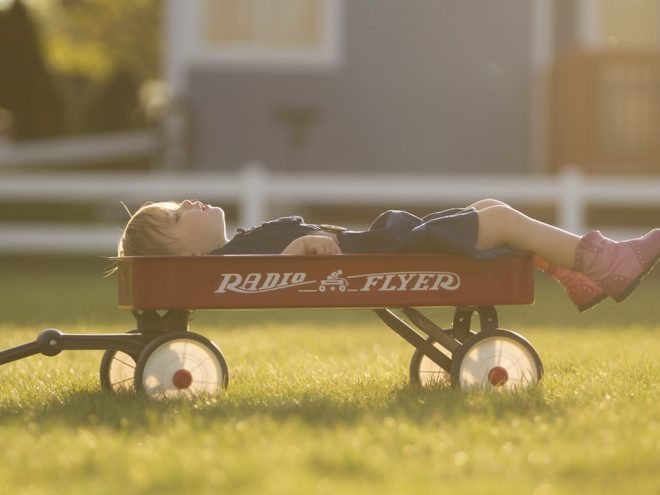How much time does your kid go outside to play? On average, children spend four to seven minutes playing outdoors and four to six hours watching screens each day. Much of that screen time has to do with the prevalence of phones and tablets in our society. Do understand that some daily screen time is okay for children, and some is necessary, like when kids use screens for learning at school.
And we understand the necessity of a parent who gives a tablet to their child when they need a break — that happens, no judgment at all. However, consider encouraging your kiddo to put down the phone, because the benefits of going outside are myriad.
1. Exercise
When kids get outside, they often engage in active play, accelerating their heart rate and exercising their muscles. Exercise outdoors can also prevent childhood obesity and developing type two diabetes. Depending on your child’s age, encourage them to get outside for at least 30 to 60 minutes a day.
Take your child outside every day until the activity becomes a habit. Go on a scavenger hunt in your backyard or investigate an anthill together. Have them invite friends on a bike ride or take the group on a walk to a local playground. The more time you encourage your kiddo to spend playing outside each day could have long-term implications on their healthy habits.
2. Sunshine
While you don’t want your child to get a sunburn, you want them to get the positive effects of sun exposure like Vitamin D. This vitamin is crucial to many processes in your body, including healthy bone development and increased immunity.
Unfortunately, the American Academy of Pediatrics reports that most children don’t get the amount of Vitamin D needed for daily intake. Here is the recommended daily dosage for children based on their age:
- Infants should get 1,000 to 1,500 international units (IU)
- Children ages one to eight years should get 2,500 to 3,000 IU
- Children nine years and older should get 4,000 IU
Absorbing Vitamin D naturally is one of the significant benefits of going outside to play. However, it’s not precisely measurable in international units. So how long does a child need to play outdoors to absorb enough of the vitamin? Your child can generate all their necessary Vitamin D needs, through April until October, by spending just 15 to 30 minutes in the sunshine.
3. Cognitive
During unstructured outside play, children make decisions and watch the consequences of their actions. “If I drop this acorn down this storm drain, how long will it take to hear a splash?” Play in nature, where they can physically get their hands dirty, allows children to piece together the concept of cause and effect and better understand that choices have real-life outcomes. Your child will learn to test out new ideas that they’ve observed and make links between previous experiences. Nature is the perfect environment for such experiments.
Additionally, creative play, which engages the imagination to pretend, is another way children can engage in unstructured play while outside. This method of play does much to help kids use critical thinking skills and develop cognitively. Help your child experience the benefits of going outdoors and develop their ability to conceptualize and brainstorm by playing pretend with them – and have a lot of fun while doing so!
4. Social
Another benefit of going outside for play is social development for your child. When children play with their peers, they learn social rules on how to interact with others. Specifically, when kids choose to play outside on a playground or in a backyard, they engage in unstructured play activities. These unstructured play formats provide children the opportunities to learn the ins and outs of how to work together, compromise and advocate for themselves.
There are even social benefits gained from you and your child playing together outside. When you play with your child, know that you are investing in them and are creating a supportive relationship. Additionally, a play relationship is hugely helpful in the development of your child’s language skills.
5. Risk-Taking
Risk-taking behavior can be considered harmful. However, the impulse of risk-taking itself is not a bad thing but rather something inherent to childhood. Outside play is often spontaneous and supports a healthy level of risk-taking. It encourages children to interact with the environment so they can understand how the world around them operates. Your child can benefit from appropriate risk-taking behaviors by developing a greater sense of mental flexibility and comfort with the unknown.
As a parent, you can foster an appropriate level of risk-taking by playing outside with your child. Consider the risk of the situation versus the benefit gained. If your child wants to climb a tree, consider the worst-case scenario – she could fall and break her arm. But the best-case scenario is that she climbs the tree successfully and gains self-confidence. Give your child a degree of independence with risk-taking behaviors in outside play, and be always watchful and ready to step in if things go wrong.
Help Your Child Get Outside Today
See the benefits of going outside for yourself and your child. Spend time engaged in unstructured play with your little one and start enjoying nature together today!





